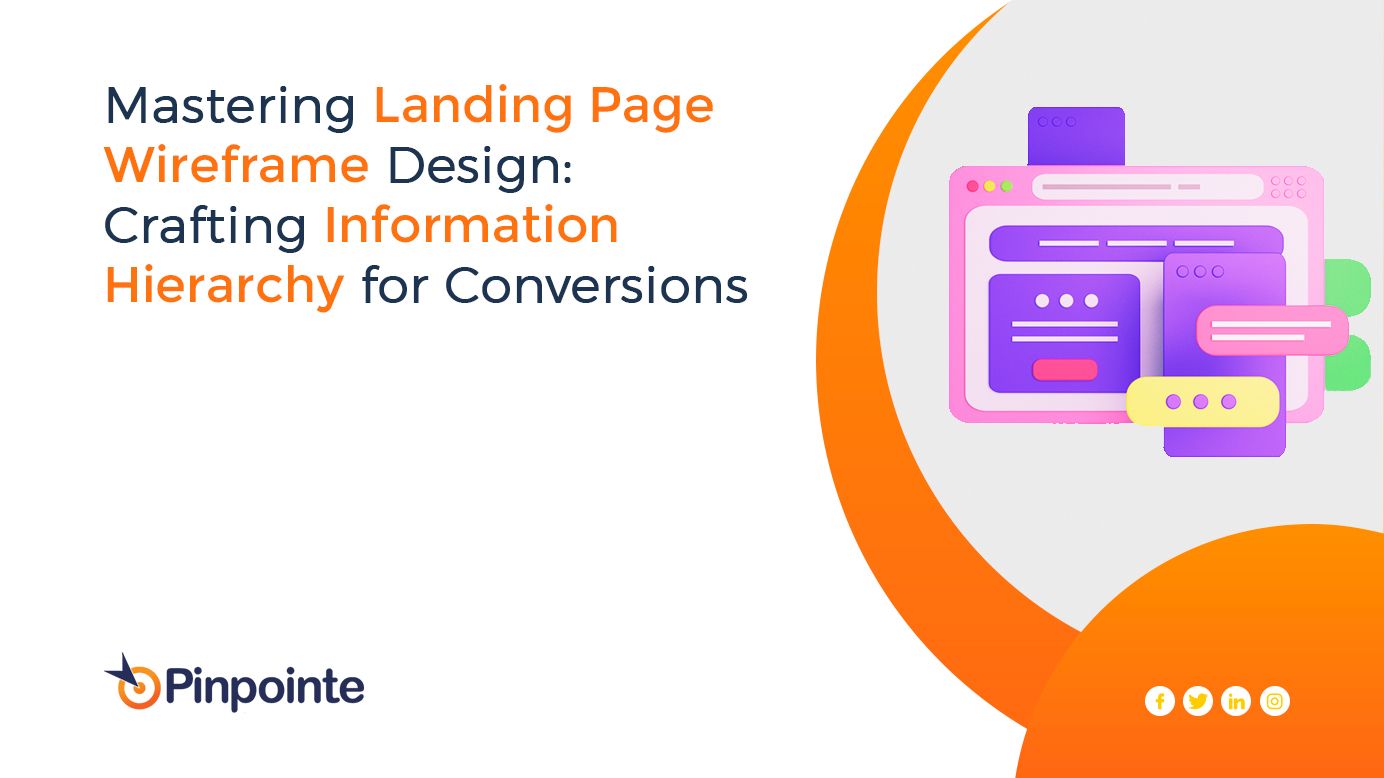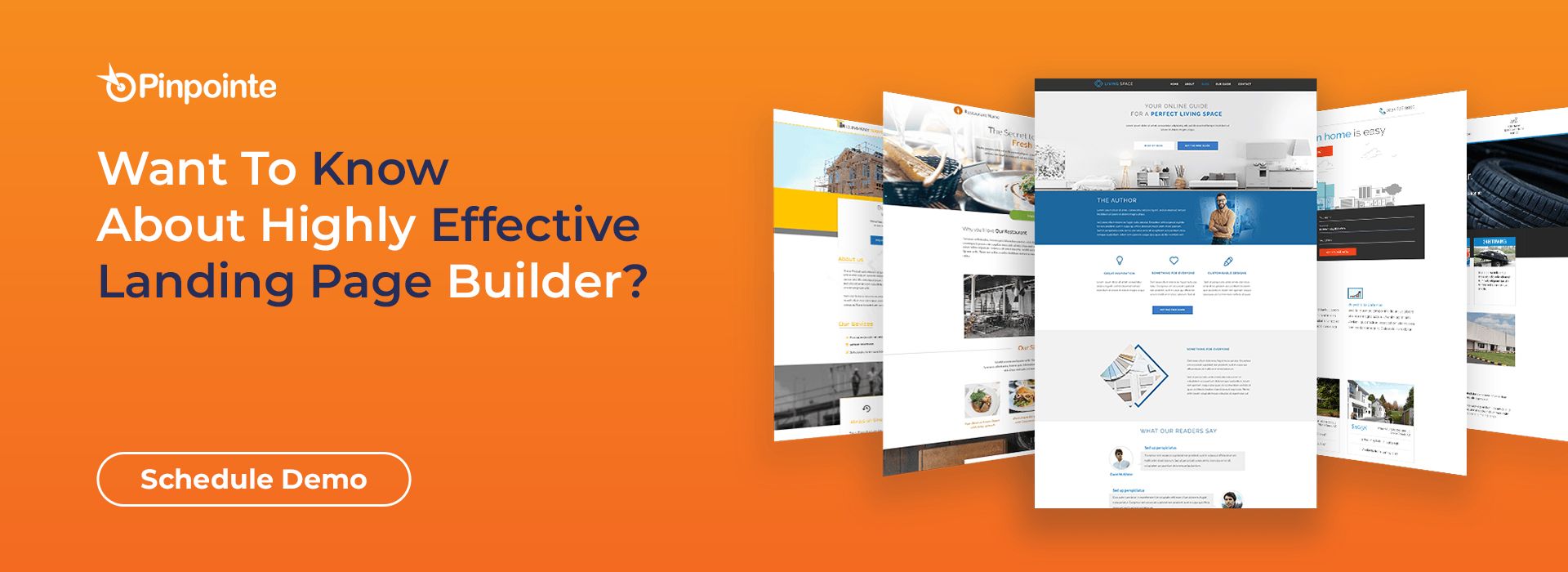
Mastering Landing Page Wireframe Design: Crafting Information Hierarchy for Conversions
Table of Contents
A well-structured and user-friendly landing page stands as the foundation upon which successful conversions are built. Think of it as constructing a house - your landing page is that essential blueprint. And, just as any architectural endeavor begins with a well-thought-out plan, so does your landing page creation process. Enter the landing page wireframe, your crucial first step towards crafting a landing page that not only captivates but converts. This comprehensive guide takes you on a journey through the art of creating a landing page wireframe, focusing on essential elements like information hierarchy design, effective wireframing techniques, and the application of user-centered principles - all aimed at driving conversions and ensuring your digital real estate stands out in the crowded online landscape.
The success of any landing page hinges on the clarity with which its message is communicated. Information hierarchy design is the first cornerstone. Here, we dive deep into the art of structuring content to guide your audience seamlessly from the top to the bottom of your landing page. Consider this your architectural blueprint, ensuring that every element, from the headline to the call-to-action, finds its rightful place in the user's journey. Throughout this guide, our aim is not only to inform but to engage. Visual aids, interactive elements, and real-world examples will be woven into the narrative, making your journey into the world of landing page wireframes both informative and enjoyable.
With these comprehensive insights, you're poised to begin crafting landing page wireframes that don't just capture attention but guide users toward conversion with precision and purpose.
Understanding the Basics of Landing Page Wireframes
A landing page is your virtual sales pitch – a dedicated platform designed to captivate and convert potential customers. Just as architects carefully plan the layout and structure of a building before construction begins, creating an effective landing page requires a blueprint. This blueprint is called a landing page wireframe, and it's the fundamental step in the process of crafting a high-converting landing page. In this blog, we'll explore the basics of landing page wireframes, their significance in web design, and the key elements they should include.
The Blueprint of a Landing Page
Think of a landing page wireframe as the blueprint for your digital masterpiece. It's the skeletal framework that outlines how your page's content and elements will be organized. Just as a building's blueprint details where each room will be, where doors and windows will go, and how everything will flow, a landing page wireframe establishes where each element, from the headline to the call-to-action buttons, will be placed. It serves as the foundational plan for your entire landing page, dictating the placement and flow of content.
Why is this blueprint essential? Imagine constructing a building without a blueprint. It would result in chaos, with walls, windows, and doors placed haphazardly. Similarly, creating a landing page without a wireframe can lead to a cluttered and confusing user experience. The wireframe is your guide to organizing content, images, and interactive elements. It ensures that every piece of your landing page puzzle finds its rightful place, contributing to a coherent and persuasive user journey.
Significance in Web Design
Landing page wireframes are not just a preliminary step; they are a strategic approach that fosters clarity, efficiency, and user-centric design. They provide a clear roadmap for both designers and content creators, ensuring everyone is on the same page. By planning the layout and organization of content in advance, wireframing enables a landing page to communicate its message with precision, which is essential for achieving high conversion rates.
In web design, the wireframe is like the foundation of a building. It supports all the elements that come after it and determines how the structure will stand. A well-structured wireframe is crucial for a well-structured landing page. When the wireframe is well-designed, it guides the design and development processes, resulting in a landing page that's visually pleasing, easy to navigate, and effective in achieving its goals.
Key Elements in a Wireframe
A landing page wireframe typically includes several key elements:
1. Headline: This is the first thing visitors see, and it should be prominently placed at the top of the page.
2. Sub headline: A subhead line provides additional context and supports the main headline.
3. Images and Media: Wireframes indicate where images, videos, and other media will be placed, specifying their size and placement.
4. Form Fields: If your landing page includes a form for lead capture, the wireframe details the fields, their placement, and the call-to-action button.
5. Call to Action: The wireframe outlines the size and placement of the call-to-action button, which is crucial for conversions.
6. Social Proof: If you're including testimonials, reviews, or trust badges, the wireframe indicates where they should go.
7. Navigation: In some cases, you may include navigation elements. The wireframe specifies their placement and style.
Information Hierarchy Design for Landing Pages
Landing pages are the virtual front doors to your online business. They play a pivotal role in capturing the attention of potential customers and guiding them towards conversion. However, creating an effective landing page is not just about throwing together some text and images. It's about designing a persuasive and intuitive user experience, and a fundamental part of this process is understanding information hierarchy design.
The Essence of Information Hierarchy
Imagine you're reading a book. The title is bold, the chapter headings are clear, and the text flows logically from page to page. This is the result of thoughtful information hierarchy design. Just like a well-structured book, a landing page should have a clear hierarchy of information that guides users seamlessly from the top to the bottom.
Information hierarchy is the art of structuring content in a way that helps users effortlessly absorb the message you want to convey. It's about arranging elements on a page in a manner that prioritizes what's most important and leads users towards taking the desired actions.
Visual Hierarchy in Web Design
In the context of landing pages, visual hierarchy in web design is the cornerstone of information hierarchy. It determines what elements stand out, what captures a user's attention, and what guides them towards the ultimate goal - conversion.
Visual hierarchy is established through a combination of factors:
1. Size: Larger elements naturally attract attention. Your headline should be bigger than the sub headline, which, in turn, should be larger than the body text. The call-to-action button should be one of the most prominent elements.
2. Color: Color can be a powerful tool for emphasizing certain elements. For instance, a bright and contrasting color for your call-to-action button can make it stand out.
3. Typography: The choice of fonts and font styles contributes to visual hierarchy. Bold or italicized text can draw attention to key points.
4. Spacing: Proper spacing around elements can make them stand out. White space or padding can be used to isolate important elements.
By strategically employing these visual cues, you can lead your users' eyes through your landing page, ensuring they see what's most important and are enticed to take action.
Content Priority
Content priority is another crucial aspect of information hierarchy design. It's not just about visual hierarchy; it's about the sequence in which information is presented.
Consider the journey a user takes on your landing page:
· They arrive on the page and need to quickly understand what it's about.
· They learn more about the product or service, why it's beneficial, and how it works.
· They overcome any potential objections or doubts.
· They are guided towards the call to action.
So now you can think how to optimize a landing page well that should be structured to tell this story. It should gradually build interest and trust, leading users from the top to the bottom. Content priority helps ensure that users move through a logical and compelling journey that culminates in conversion

Crafting a User-Focused Wireframe
Information hierarchy design is not just about aesthetics; it's about understanding your audience. To create a user-focused wireframe, you need to put yourself in the user's shoes. What information is most important to them? What questions do they need to be answered before taking action? How can you make the user's journey as smooth as possible?
When designing your wireframe, consider the following:
1. The "Above the Fold" Area: This is the content visible without scrolling. It should contain the most critical elements: a clear headline, a brief and enticing description, and the primary call to action.
2. Scan-ability: Most users scan web pages rather than reading every word. Use headings, subheadings, bullet points, and other formatting to make it easy for users to grasp your message quickly.
3. Trust Signals: Testimonials, reviews, or trust badges can be powerful trust signals. Include them strategically where they can alleviate doubts.
4. Responsiveness: Ensure that your information hierarchy works on various devices, including mobile. Mobile users should have the same smooth journey as desktop users.
Effective Wireframing Techniques
Effective wireframing is the backbone of web design. It's the blueprint that ensures your digital masterpiece will not only captivate but also convert. Wireframing isn't just about arranging elements on a page; it's about strategically organizing them to create a landing page that converts and stands out in the competitive digital landscape.
Structuring Landing Page Content
Effective wireframing begins with a clear structure. Prioritize the placement of critical elements, such as the headline, description, images, and the call-to-action button. By mapping out the content's flow, you can ensure that your landing page tells a compelling story that guides users towards conversion.
Fonts and Colors Selection
Fonts and colors play a pivotal role in conveying your brand's identity. Choose fonts that resonate with your message and select a color scheme that appeals to your target audience. The right font and color choices not only make your landing page visually appealing but also enhance its readability and user-friendliness.
Organizing Visual Elements
The placement and organization of visual elements, such as images and videos, can significantly impact user engagement. Employ techniques that draw attention to these elements strategically. Effective visual organization is crucial for capturing your visitors' interest and keeping them engaged throughout their journey.
Conclusion
In the web design universe, the creation of a landing page wireframe acts as the cornerstone, much like a meticulous blueprint before constructing a grand edifice. It's the core of user-friendly, conversion-focused online experiences. Information hierarchy design is the bedrock principle. It guides a universal path for users, ensuring they journey seamlessly from initial interaction to successful conversion, regardless of your landing page's purpose. Understanding this principle is akin to speaking a universal language in the web design world.
Effective wireframing techniques are the linchpin. They allow you to transform abstract ideas into visually engaging and interactive landing pages. It's more than element placement; it's a strategic orchestration that captivates and holds users' attention. These techniques are your secret weapon to engage and guide users effectively. User-centered wireframes elevate the experience. They prioritize mobile-friendliness and integrate SEO techniques, making your landing page both visually appealing and discoverable. It's wireframing designed with the user's needs at the forefront.
As you embark on your web design journey, wireframing is your confident starting point. Mastering these principles - information hierarchy design, effective wireframing techniques, and a user-centered approach - will unlock your landing pages' full potential. Begin your wireframing adventure to see your digital creations captivate, engage, and convert with finesse. Your path to online success starts here.
Pinpointe Newsletter
Join the newsletter to receive the latest updates in your inbox.



